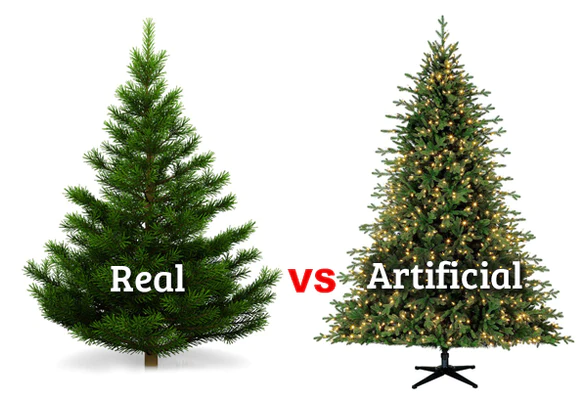
“Joy to the world!” Christmas is one of the biggest holiday seasons, and Christmas Tree is an important symbol and component of the festive season. However, Christmas trees come with an environmental cost that has become a topic of discussion. With the holiday season right around the corner, it is time to reconsider the relationship between Christmas trees and their environmental impact.
While one might worry about chopping down millions of trees yearly, a real Christmas tree may be more sustainable than an artificial one. Trees can be harvested from renewable energy sources in ways that they are replanted, providing lots of environmental, conservation and natural benefits.
Amongst many, one of the many benefits is that trees absorb carbon dioxide, which is a primary contributor to global. According to National Christmas Tree Association (NCTA), it can take at least seven years to grow a Christmas tree to its typical height of between six and seven feet. The Real Christmas trees have an average carbon footprint of nearly 3.5kg of CO2 if disposed of via wood chipper or bonfire.
However, if they end up in landfills, the carbon footprint increases four-fold, equivalent to roughly 16kg of CO2. In contrast to the above statistics, there has been a voice against real Christmas trees and the use of artificial ones to reduce the carbon footprint. However, if we discard the artificial trees, the same would release nearly 40kg of CO2. The above would mean that it would take almost 12 years for a fake tree to become eco-friendly.
A real Christmas tree is biodegradable and has no chemical impacts on its environment. Additionally, the composed Christmas trees can be used for fertilization the following year. In contrast, artificial Christmas trees are made of petroleum-based plastics and metals, commonly made of polyvinyl chloride (PVC), adding pressure on landfills and disposal at the end of their life cycle. Another aspect of plastic Christmas tree usage is that it is manufactured in developing nations and transported to developed nations, thus adding to the already increasing carbon footprint.
Though Christmas trees have become an indelible part of our consumer culture, roughly 33-36 million Christmas trees are sold within the US, while nearly 50- 60 million in European nations, yet a significant portion of Christmas trees are not used for decorations.
So, what can we do, and how can we ensure that the festive purchase this year is as environmentally-friendly as possible? Some of the ways to enjoy an eco-friendly Christmas are:
· Buy a second-had tree (artificial tree)
· Decorate a living outside tree
· Purchase a live potted tree
· Reusing trunk as firewood
· Allow customization of the existing tree
· Buy local and support local vendors and reduce transportation carbon footprint
The original meaning and importance of the Christmas tree are to provide hope for people during freezing winters worldwide. With commercialization, the rise of mass production and contemporary consumerism has distorted the Christmas tree’s true meaning. Furthermore, the massive demand has also devastated the current ecosystem. There have been debates surrounding original vs fake Christmas trees and their environmental impact, which is hugely complex. With Christmas just around the corner, it is essential to reflect on how we can protect our environment and be more environmentally conscious and environmentally as we make our purchases during our holidays.


